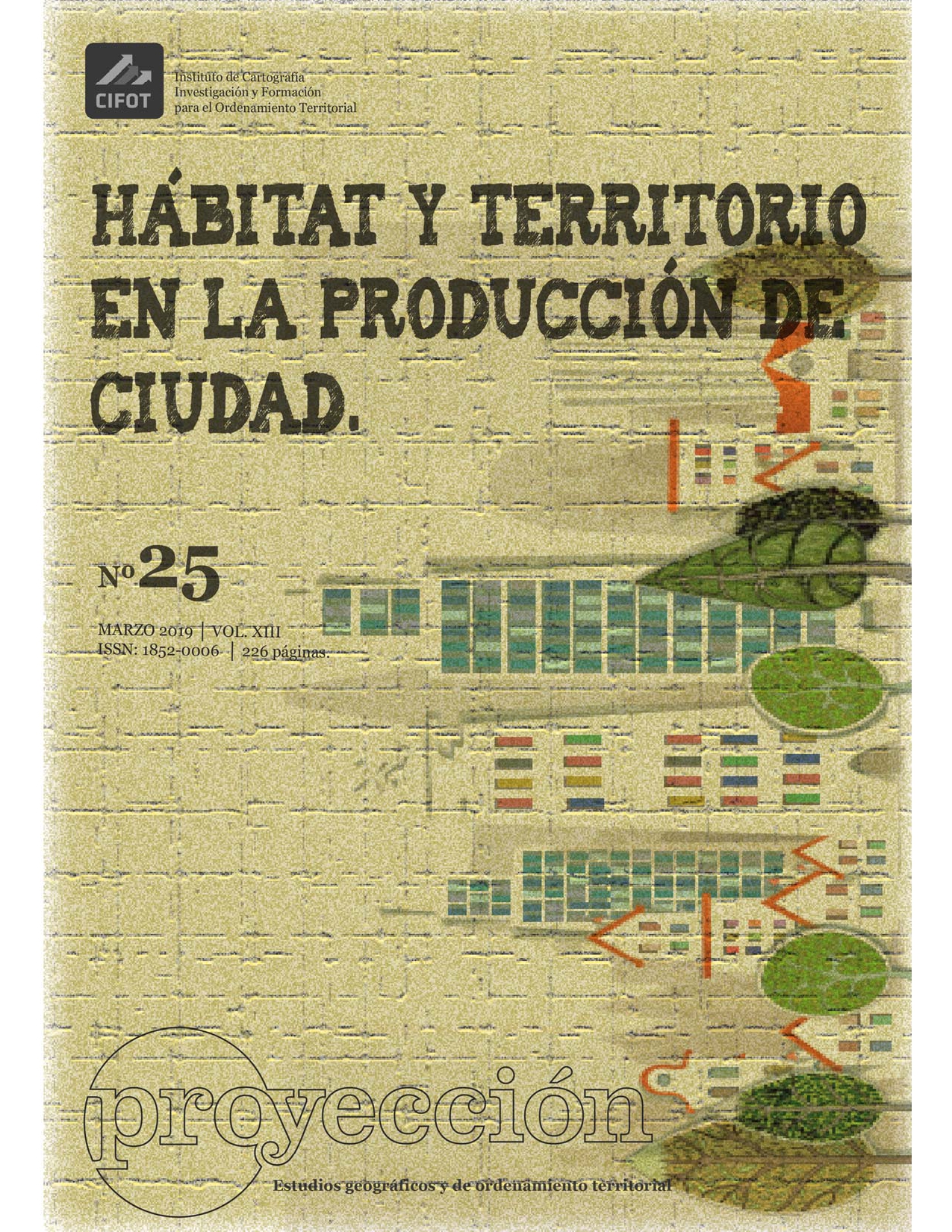Essential Basic Urban Services in the City of Santa Fe. Urban Planning Indicator
Keywords:
basic urban services, urban planning, space efficiency, urban fragmentation, landuse planningAbstract
Planning is mainly characterized by anticipating actions in order to achieve certain objectives by the efficient use of means. Since the essential basic urban services must be guaranteed by the state, and resources are limited, it is essential to find out which sectors of a city have more needs, and to analyze the degree of adjustment of service coverage to the principle of space efficiency. In the District of Santa Fe, a diagnosis of homes with NBI (the Spanish acronym for "unsatisfied basic needs") was presented at a census radio scale, according to data provided by the National Institute of Statistics and Census in 2010. An index of basic essential services coverage was designed, consisting of three variables (homes with tap water, sewer, and gas line network). The living conditions are not optimal in the places where the networks of these services do not cover the whole territory, coinciding with the highest levels of population with NBI. The application of the correlation index specifically indicates the relationship between the population with NBI and the levels of service coverage. The use of GIS (Geographical Information Systems) tools allows to map radios with more critical situations.
References
ANTÚNEZ, I.; GALILEA, S. (2003). "Servicios públicos urbanos y gestión local en América Latina y el Caribe. Problemas, metodologías y políticas". Serie Medio Ambiente y Desarrollo. Nro. 69. División Desarrollo Sostenible y Asentamientos Humanos. CEPAL.
AZPIAZU, D.; BONOFIGLIO, N. (2007). Nuevos y viejos actores en los servicios públicos. Transferencias de capital en los sectores de agua potable y saneamiento y en distribución de energía eléctrica en la post-convertibilidad. Buenos Aires: FLACSO.
BELL, D. (1973). The coming of the post-industrial society, a venture in social forecasting. New York: Basic Books.
BRUNDTLAND, G. H. (INFORME). (1987) Our common future, Oxford: Oxford University Press (Traducción (1988) Nuestro futuro común: Madrid: Alianza.)
BUZAI, G. (2014). Mapas sociales urbanos. Buenos Aires: Lugar.
CARDOSO, M. M. (2017). "Estudio de la vulnerabilidad socio-ambiental a través de un índice sintético. Caso de distritos bajo riesgo de inundación: Santa Fe, Recreo y Monte Vera, Provincia de Santa Fe, Argentina". Caderno De Geografía. Vol. 27, Nº. 48. Belo Horizonte: PUC Minas. Pp: 156-183.
CASTELLS, M. (1985). "El impacto de las nuevas tecnologías sobre los cambios urbanos y regionales". Metrópolis, territorio y crisis, Madrid: Alfoz.
CLEMENTE CUBILLAS, E. (2002). "El pecado ecológico". Temas de psicología (VIII): homenaje al Profesor Enrique Freijo Balsebre, Universidad de Salamanca: Salamanca. P: 81-98.
DE MATTOS, C. (2002). "Transformación de las ciudades latinoamericanas. ¿Impactos de la globalización?" En: Eure (Santiago). Vol. 28. Nro. 85. Santiago de Chile.
HARVEY, D. (1973). Social justice and the city. Madrid: Siglo XXI.
INDEC, Instituto Nacional de Estadística y Censo, Argentina. (2010). Censo Nacional de Población, Hogares y Viviendas 2010 (Datos definitivos).
IPEC, Instituto Provincial de Estadística y Censo, Argentina. Censo Nacional de Población, Hogares y Viviendas, 2010, Escala de radios y fracciones censales.
MORENO JIMÉNEZ, A.; ESCOLANO UTRILLA, S. (1992). Los servicios y el territorio. Madrid: Síntesis.
MORENO JIMÉNEZ, A.; VINUESA ANGULO, J. (2009). "Desequilibrios y reequilibrios intrametropolitanos: principios de evaluación y metodología de análisis". Ciudad y territorio. Estudios territoriales, XLI (160). P: 233 – 262. Ministerio de Vivienda de España.
PÉREZ-FOGUET, A. (Ed). (2005). Asentamientos humanos e infraestructura de servicios urbanos. Tecnología para el desarrollo humano y acceso a los servicios básicos. Volumen 8. Asociació Catalana d’Enginyeria Sense Fronteras. Barcelona.
SÁNCHEZ, D. C. (2011). Indicadores turísticos en la Argentina: una primera aproximación. Rev. Investigaciones Turísticas, (2), 2015. Julio-diciembre, 39-65.
SASSEN, S. (1991). The global city. New York, London, Tokyo. New Jersey: University Press.
SOJA, E. (2000). Postmetrópolis. Critical studies of cities and regions. Oxford: Blackwell.
VELÁZQUEZ, G. (2001). Geografía, calidad de vida y fragmentación en la Argentina de los noventa. Análisis regional y departamental utilizando SIGs. Centro de Investigaciones Geográficas. Facultad de Ciencias Humanas. Universidad Nacional del Centro de la Provincia de Buenos Aires. Tandil.
VÁZQUEZ MARTÍN, M. (2001). "Veinticinco años de ética ecológica". Estudios Filosóficos, nro. 143. p: 69-118.
Downloads
Published
How to Cite
Issue
Section
License

This work is licensed under a Creative Commons Attribution-NonCommercial-ShareAlike 3.0 Unported License.
La revista Proyección establece las siguientes condiciones de publicación para los/as autores/as:
- Los/as autores/as conservan los derechos de autor y ceden a la revista el derecho de publicación bajo la Licencia Creative Commons Atribución-No Comercial-CompartirIgual 3.0 No portada (CC BY-NC-SA 3.0) que permite a terceros copiar, distribuir, exhibir y ejecutar la obra citando siempre la fuente y los datos de autoría según la norma prevista por la Revista Proyección. Esta licencia no permite el uso de la obra con fines comerciales.
- Todos los trabajos publicados por Proyección, Estudios Geográficos y de Ordenamiento Territorial serán bajo la modalidad de gratuidad para autores/as y lectores/as.










